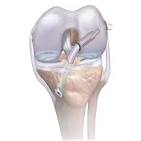Understanding ACL Transplant: A Comprehensive Guide
An Anterior Cruciate Ligament (ACL) transplant is a surgical procedure commonly performed to repair a torn or damaged ACL in the knee. The ACL is one of the major ligaments that stabilises the knee joint, and injuries to this ligament are common, especially among athletes involved in sports that require sudden stops, changes in direction, or jumping.
The procedure involves replacing the torn ACL with a graft taken from another part of the body (autograft) or from a donor (allograft). The graft serves as a scaffold for new tissue growth, allowing the body to eventually form a new ligament in place of the damaged one.
Recovery from an ACL transplant typically involves a period of rest, followed by physical therapy to regain strength and range of motion in the knee. It is essential for patients to follow their surgeon’s post-operative instructions carefully to ensure optimal healing and prevent complications.
While an ACL transplant can significantly improve knee stability and function, it is important to note that full recovery may take several months. Patients should be prepared for a gradual return to normal activities and sports under the guidance of their healthcare team.
If you suspect you have an ACL injury or have been advised to undergo an ACL transplant, consult with a qualified orthopaedic surgeon to discuss your options and create a personalised treatment plan tailored to your needs. Remember, early intervention and proper rehabilitation are key factors in achieving successful outcomes following an ACL transplant.
Understanding ACL Transplants: Common Questions and Answers
- Can I live a normal life after ACL surgery?
- Can an old ACL injury be repaired?
- Is ACL surgery good for life?
- Is it possible to live without ACL?
- Can you get an ACL transplant?
Can I live a normal life after ACL surgery?
After undergoing ACL surgery, many patients wonder whether they can return to living a normal life. The good news is that with proper care, rehabilitation, and adherence to post-operative guidelines, most individuals can indeed resume their daily activities and even participate in sports or physical activities. It’s important to follow the advice of your healthcare team, engage in physiotherapy to regain strength and mobility, and gradually reintroduce activities to avoid re-injury. While it may take time and dedication, living a fulfilling and active life post-ACL surgery is achievable for many patients.
Can an old ACL injury be repaired?
When it comes to an old ACL injury, the possibility of repair depends on various factors such as the extent of the damage, the overall condition of the knee joint, and the individual’s lifestyle and activity level. In some cases, particularly with chronic or severe injuries, a traditional repair may not be feasible. However, advancements in surgical techniques, such as ACL transplants using grafts from other parts of the body or donors, offer viable options for restoring stability and function to the knee even after an old ACL injury. Consulting with a qualified orthopaedic surgeon is crucial to determine the most appropriate course of action based on your specific circumstances and goals for recovery.
Is ACL surgery good for life?
ACL surgery is a highly effective treatment option for individuals with a torn or damaged ACL, offering significant improvements in knee stability and function. While ACL surgery can provide long-term benefits and enable patients to return to their desired level of activity, it is important to understand that the success of the procedure may vary from person to person. Factors such as post-operative rehabilitation, adherence to medical advice, and individual healing processes can influence the longevity of the surgical outcomes. Therefore, while ACL surgery can offer lasting results for many individuals, it is essential to maintain regular follow-ups with healthcare providers and engage in appropriate post-operative care to maximise the benefits of the procedure over time.
Is it possible to live without ACL?
Living without an Anterior Cruciate Ligament (ACL) is technically possible, as the ACL is not essential for basic survival. However, for individuals who lead active lifestyles or participate in sports that involve pivoting or sudden changes in direction, the absence of an ACL can significantly impact knee stability and increase the risk of further injuries. Without the ACL’s stabilising function, the knee joint may feel less secure and be more prone to giving way during physical activities. Therefore, while it is possible to live without an ACL, individuals seeking to maintain an active lifestyle may benefit from considering surgical options such as ACL reconstruction to restore stability and function to the knee joint.
Can you get an ACL transplant?
Yes, individuals who have suffered a torn or damaged ACL may be candidates for an ACL transplant. This surgical procedure is often recommended for those who experience persistent instability in the knee joint due to ACL injury. By replacing the damaged ligament with a graft, an ACL transplant aims to restore stability and function to the knee, allowing patients to regain mobility and potentially return to their desired level of activity. It is important to consult with a qualified orthopaedic surgeon to determine if an ACL transplant is the appropriate treatment option based on your specific condition and medical history.

